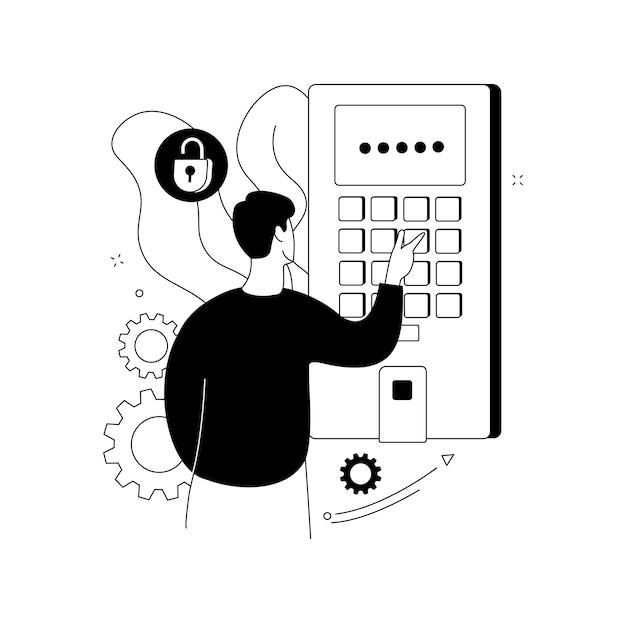Direct data entry devices are essential tools for inputting data into computer systems. Whether you’re typing on a keyboard, scanning barcodes, or using a touch screen, these devices play a crucial role in data entry. In this blog post, we’ll explore the concept of direct data entry devices, the two types of input devices, and the significance of input and output devices in computer systems.
Data entry devices are used to input data into computer systems, allowing users to interact with digital information. There are two types of input devices: direct and indirect. Direct data entry devices enable users to input data directly into the computer, without the need for additional processing or translation. On the other hand, indirect data entry devices require further processing or translation before the computer system can interpret the input.
In this blog post, we will focus on direct data entry devices and provide an example of one. By understanding the importance of direct data entry devices, you’ll gain insight into how information is inputted into computer systems efficiently and accurately. So let’s dive into the world of direct data entry devices and explore the fascinating ways they facilitate data input.

What is an Example of a Direct Data Entry Device?
In today’s technologically advanced world, direct data entry devices have become an essential component of many industries. These devices allow users to input data directly into a computer system, eliminating the need for additional steps or manual data entry. One example of such a device is the trusty barcode scanner.
Barcode Scanner: Simplifying Data Entry, One Beep at a Time
Imagine this: you’re at the grocery store, buying your favorite snack—potato chips. The cashier swiftly scans the barcode on the pack, and just like that, the price appears on the register, the total gets calculated, and you’re on your way to satisfying your crunchy cravings. That magic happens because of the humble barcode scanner.
How Does it Work
A barcode scanner is a handheld device that uses laser beams or LED lights to capture and decode barcodes. These barcodes are the lined-up patterns of black and white stripes commonly found on products, price tags, or tickets. When the scanner’s beam hits the barcode, the reflections are transformed into electrical signals which are then processed by the scanner’s internal processor. The processor decodes the pattern, translating it into numbers or letters, which are then fed directly into the computer system.
Advantages of Barcode Scanners
Barcode scanners offer a range of advantages that make them a popular choice for direct data entry:
1. Speed and Efficiency
By reading barcodes in a fraction of a second, barcode scanners significantly speed up data entry tasks. This efficiency translates into shorter wait times at cash registers, improved inventory management, and increased productivity in various industries.
2. Error Reduction
With direct data entry using barcode scanners, human error is greatly minimized. Remember those times when typos or misinterpretations could lead to pricing mishaps or inventory discrepancies? Barcode scanners eliminate such concerns, ensuring accurate and reliable data input.
3. Versatility
Barcode scanners can be found in various forms such as handheld scanners, fixed-mount scanners, or even built into mobile devices. They’re used across a wide range of industries including retail, healthcare, manufacturing, and logistics. Whatever your business, there’s likely a barcode scanner solution tailored to your needs.
4. Cost-Effectiveness
While the initial investment in barcode scanners may seem daunting, their long-term cost-effectiveness is hard to beat. The time and labor saved by streamlining data entry processes outweigh the upfront expenses. Additionally, the ease of implementing barcode scanners makes them a budget-friendly option.
In conclusion, the humble barcode scanner stands as a prime example of a direct data entry device. Its ability to swiftly and accurately read barcodes simplifies data entry tasks in various industries. From reducing errors to enhancing speed and efficiency, barcode scanners have become an indispensable tool in our modern world. So, next time you’re at the checkout counter, take a moment to appreciate the wonders of this unassuming device and the smooth data entry experience it provides.

FAQ: What is an example of a direct data entry device?
Data entry devices play a crucial role in capturing information and entering it into computer systems. From keyboards to touch screens, there are various types of data entry devices available. In this FAQ-style subsection, we will answer some commonly asked questions about data entry devices, including examples of direct data entry devices.
What are data entry devices
Data entry devices are hardware peripherals that allow users to input data into computer systems. These devices serve as a medium through which users interact with computers, entering information that can be processed and stored.
What are the 2 types of input devices
When it comes to input devices, there are two main types: direct entry devices and indirect entry devices.
What is input and output devices
Input devices, as the name suggests, are used to input data into computers. They provide a means for users to communicate with the computer system. On the other hand, output devices are responsible for displaying or presenting the processed data or information to the user.
What are the two types of direct entry devices
Direct entry devices can be further categorized into two types: manual direct entry devices and automatic direct entry devices.
Manual Direct Entry Devices
Manual direct entry devices require human intervention to input data into the computer system. Examples of manual direct entry devices include keyboards, mouse devices, and handwriting recognition devices.
Automatic Direct Entry Devices
Automatic direct entry devices, on the other hand, do not require extensive human intervention. These devices automatically capture and enter the data into the computer system. An example of an automatic direct entry device is a barcode scanner.
What is input and output devices explained with examples
Input and output devices work together to ensure efficient interaction between users and computer systems. Let’s take a look at a few examples of input and output devices:
Examples of Input Devices
- Keyboard: Perhaps the most common input device, keyboards allow users to input text and commands into the computer.
- Mouse: A versatile input device used to navigate graphical user interfaces and control the cursor on the screen.
- Touchscreen: Widely used in smartphones and tablets, touchscreens enable users to input data by directly touching the display.
Examples of Output Devices
- Monitor: Displays the processed data, allowing users to view the information presented by the computer.
- Printer: Provides a hard copy of the processed data or information for tangible use or archiving purposes.
- Speakers: Output devices that produce sound, enabling users to listen to audio generated by the computer system.
What is an example of a direct data entry device
A direct data entry device is a type of input device that allows users to enter data directly into a computer system without the need for intermediate steps. An example of a direct data entry device is a barcode scanner. With a simple scan, the scanner captures the information encoded in a barcode and inputs it directly into the computer system, saving time and minimizing errors.
Data entry devices, whether manual or automatic, play a vital role in interacting with computer systems. By understanding the different types of data entry devices and their examples, users can make informed decisions about which devices best suit their needs. Whether it’s a keyboard, mouse, barcode scanner, or any other direct data entry device, the goal is to streamline the process and enhance efficiency in data input.
